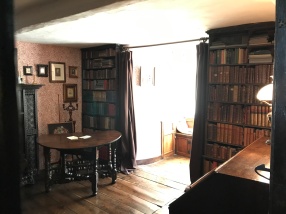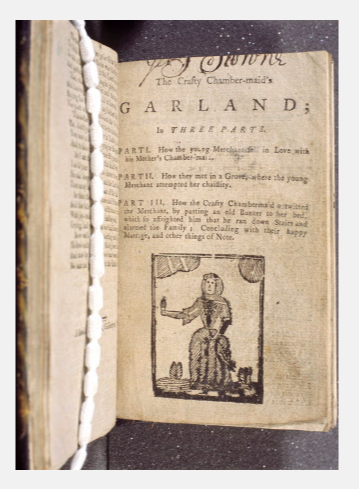Many of the authors I know, in their story development stage, gather together ideas in the way lots of creative professionals do, by building them into a mood board. It helps to form those early inspirations into a context that creates a good story. A story – in romance that has a strong beginning middle and end, and in thrillers has a strong beginnnig, fifteen suprise deviations and a shocking end ;D .
I’ve often talked about inspirations for the settings of scenes, and the plotlines in my books but there are also inspirations for the appearance of characters. Authors cut out pictures from magazines, of the public, actors and models they identify with and pin them onto cork boards along with pictures of places and sometimes maps of fictional villages and towns. My historical story boards are in my mind, on my laptop and despersed through books. There are hunderds of photos in folders, that I’ve taken on visits to places that have inspired me, and piles of books around the house with coloured bookmarkers or peices of paper poking out of the important pages. As my fans will know, for most books I also capture some of the things I’ve used as inspirtion in accompanying Pinterest Boards. So readers can see the places, items, properties and people that inspired elements of the stories.
These images include the rooms which inspired Clio’s home and lifestyle in Hartlepool, in Entangled. Then the follies at Stourhead and Newstead Abbey, Lord Byron’s property, which were inspirations for George’s home.
But I discovered a new inspiration for characters last year that I haven’t shared here before. My husband and I live in an old cottage and after we’d built an extension decided to change the furniture in the old half of the house too. So, we started hunting for antiques. But while I was searching for antique furniture I found myself being distracted by minatures in the antiques shops. I spent ages looking into the eyes and faces of people in their small portraits. As I said last week, it’s absorbing wondering who they were and how they lived, and then they became the characters. So, I started gathering some of these images. It’s no different from choosing a face in a magazine today, really.
I bought a few minatures. But then I began just saving pictures of them, because I can’t buy them all. I have about a hundred pictures.
What I particularly love is the minatures that look like mistresses. I imagine the small paintings secreted in a gentleman’s chest pocket near to his heart :’D . He’d take it out and look at it, and show his friends to brag about his prize. You can usually spot a mistress in a portrait, even among the portraits on the walls in the large stately homes. They are painted with a coquettish air and usually exposing a large part, if not all, of one breast. I’ve said it often – the Georgian’s kept their mistresses unspoken of in polite society but in plain sight. While the Victorians pretended to be pious and hid their mistresses behind closed doors. Below is the sort of image that makes me imagine this young woman was someone’s mistresss. It’s bejewelled so I think he was very proud of winning her attention, if not her affection. And she probably came at a high price. It’s the sort of portrait that would inspire a story let alone a character. I imagine her to be a woman like Harriette Wilson – and there’s a tale of a mistress that followers of this blog know very well.
The true story of a 19th Century Courtesan ~ Harriette Wilson
- Another true scandalous tale of a 19th century courtesan
- My second post on the true adventures of a 19th century courtesan on her play for a prince
- Harriette Wilson the true story of a 19th century Regency courtesan and pastures greener
- The next chapter in a Regency courtesan’s true story as recorded in her memoirs
- The next chapter in a 19th century courtesan’s true story – Harriette Wilson meets Julia Storer
- Another Chapter in a Regency courtesan’s real story
- Another chapter in my Harriette Wilson series – the true story of a regency courtesan
- The tale of the three graces – the life story of a real 19th Century courtesans continues
- The gossip of a real 19th Century courtesan offers a window into the past
- A real 19th Century courtesan Harriette Wilson seeks wealthy protector – the Duke of Wellington
- Harriette a 19th Century courtesan chases a man she desires
- Harriette Wilson a 19th Century courtesan grows tired of fame and longs for love
- Harriette Wilson does what a courtesan should never do – she falls in love
- Harriette Wilson the 19th century courtesan savours real love
- Harriette Wilson questions her lover’s friend to learn more about Lord Ponsonby’s relationship with his wife – guilt or jealousy
- The darker side of Regency England – the story of how Harriette Wilson’s sister Sophia was seduced and coerced into the life of a courtesan
- How Harriette Wilson’s Memoirs inspired me to write The Illicit Love of a Courtesan
- The end of love Harriette Wilson tells us how she suffered a broken heart
- Harriette Wilson’s fame and position as favourite receives another knock back
 Lord PonsonbyYet again Harriette gives us a fabulous insight into the world of a Regency courtesan
Lord PonsonbyYet again Harriette gives us a fabulous insight into the world of a Regency courtesan- Did all courtesans in the Regency era long for a fairy-tale ending and hope to win a duke?
- The second courtesan to seek a fairy-tale ending
- Did the Regency courtesan Harriette Wilson seek a calculated happy ending too
- Harriette begins an intrigue with a new protector perhaps with a happy ending on her mind
- Lord Worcester’s youthful adoration of a courtesan
- Harriette begins a game of tug of war over the affections of her young marquis
- Harriette and Lord Worcester’s regiment the 10th Hussars
- A theatre trip shows up the contrast between a courtesan and a prostitute
- Harriette’s description of a stay in a small apology of an inn
- Lord Worcester’s love turns desperate and Harriette resorts to disguise
- Harriette’s hopes and Lord Worcester’s love begin tumbling towards a terrible end
- The cost of love – even for a courtesan is sometimes too high
- What happens once Lord Worcester has gone, will the courtesan play?
- A new seduction
- Harriette’s country retreat – including a trip to Regency Lyme Regis
- A Courtesan’s little deceit for the sake of propriety
- A messy separation Regency courtesan style
- A courtesan scorned
- Harriette, the Regency courtesan, kicks the next man out of her bed ‘and I , to show my indifference, would make a point of joining any gay evening parties’
- The jealous courtesan and the hidden Regency fashion for seducing young men
- A courtesan caught in a possessive relationship – wracked with jealousy on both parts
- While the cats away a real Regency courtesan could…
- The jealous game played int he world of a courtesan
- A Regency courtesan’s power of persuasion
- A courtesan alone in a masculine domain
- A break-up Regency style ~ a courtesan who just can’t let go of a young handsome man
- Free as air a courtesan’s agreement of inconstancy in denial of the feelings of her heart
- A courtesan’s agreement of inconstancy – also known as revenge
- A courtesan deserted – Fanny’s break up with Colonel Parker
- Life as a courtesan begins to age and lose her fame
- A Regency courtesan caught in a love triangle
- A courtesan’s portrayal of a real Regency villain
- A real 19th century masked ball, experienced through the eyes and emotions of a courtesan
- A courtesan enjoying the novelty, secrecy and equality of a masquerade ball
- The impact of a courtesan’s kiss and tell memoirs on the elite of Regency society
- At the end of a Regency courtesan’s life, who can she turn to

























